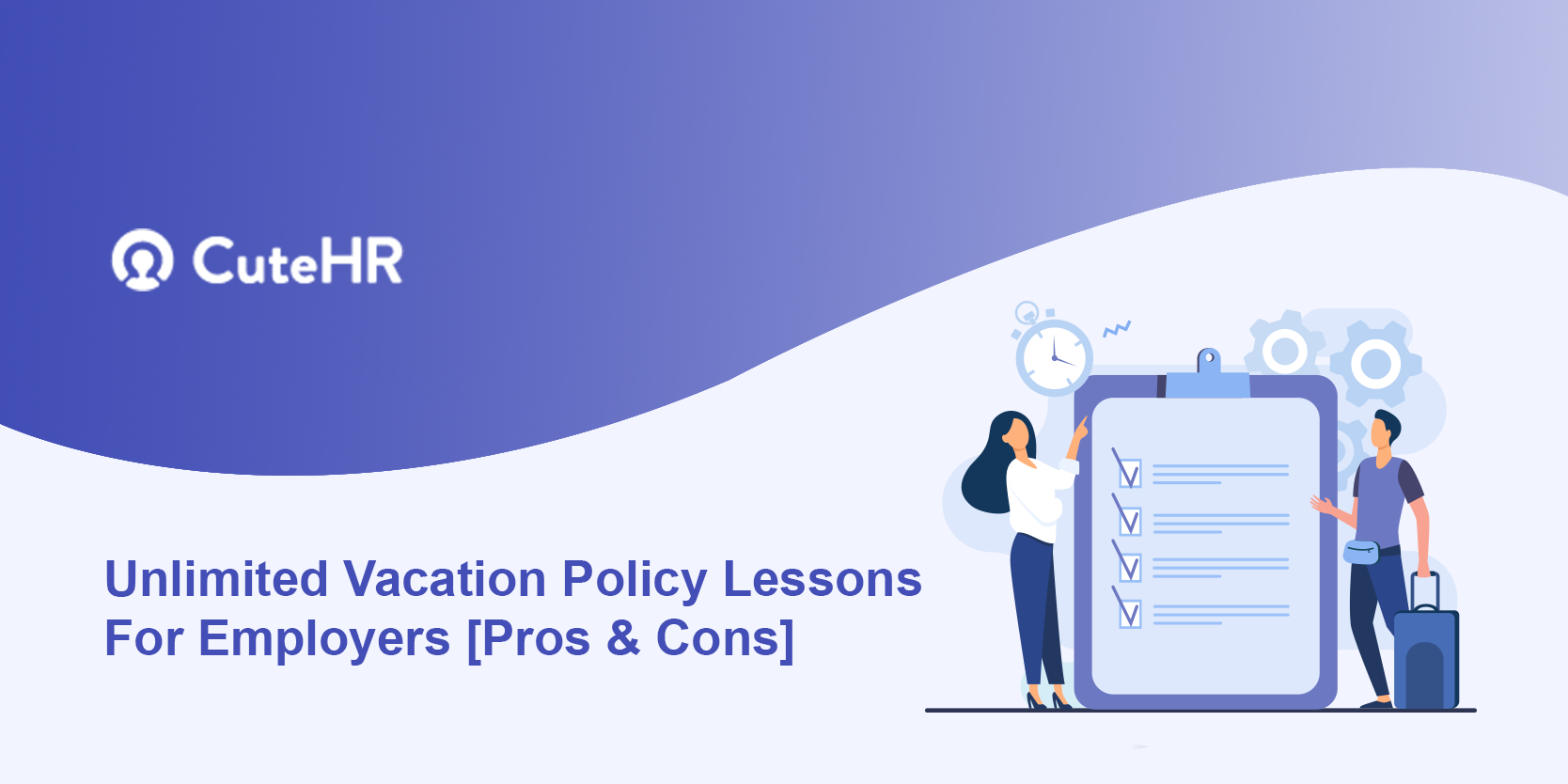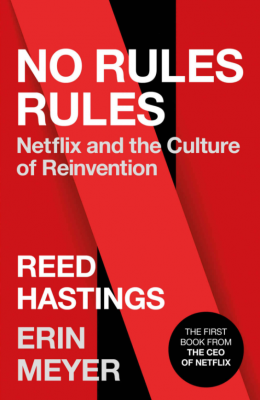04 Feb

Human resources are the most significant aspect of any industry. It is the employees who are ultimately responsible for the success of an organization. Ergo, ongoing research and policymaking are inclined to amplify their productivity. Here, the most significant contributing factor is the relationship between employee performance and mental/physical health. To facilitate this, flexible vacation policies have been experimented with and judiciously utilized across verticals. One such strategy is the unlimited vacation policy.
Although it may sound strange, many companies reaped its benefits, while others not so much.
Is this HR trend the right fit for your corporation? If yes, how to successfully implement a flexible vacation policy with best practices? This blog helps employers find much needed answers. Additionally, it is a beginner’s guide to paid time off.
What is Unlimited Vacation?
Unlimited vacation is a popular trend among millennials. It is also called Paid time off (PTO). In this policy, an employee is allowed to take unlimited time off with the expectation to deliver results in time. The idea behind an unlimited vacation is to give employees as much time off they want in return for producing results. It works on the ideology that aims to confer the ownership mentality to the workforce.
The liberty to take vacations freely leaves the employers to plan their work accordingly while maintaining a healthy work-life balance.
The need for such generous vacation policies has emerged so that employees tackle work stress, rejuvenate and better deal with personal responsibilities. Hence, the ultimate vacation majorly targets employee well-being. In return, organizations get a more independent, responsible, engaged, committed, innovative and happier workforce. In the end, PTO makes a switch from measuring hours to measuring productivity from employees.
Policies like it are challenging to implement but once done right, they can reap exemplary results.
Netflix CEO Reed Hastings talks of his company realizing the unlimited vacation policy in his book No Rules Rule.
“Time off provides mental bandwidth that allows you to think creatively and see your work in a different light. If you are working all the time, you don’t have the perspective to see your problem with fresh eyes.”
Hastings explains,
Pros and Cons of Unlimited Vacation Policy
The unlimited vacation policy is gaining currency in the corporate and business world. While some companies still contemplate whether or not it’s a good fit, others like Netflix, Kronos, and Virgin Group, believe in the positive effects of such flexible policies. Their success largely depends upon the size of the company and the way they are implemented. However, if you are seriously considering it, here are the pros and cons of unlimited vacations to consider.
Pros of Unlimited Vacation
At first glance, the idea may seem counterproductive to business, but the benefits of unlimited vacations are extensive, as mentioned below:
- Results in employee satisfaction and happiness
- Attracts and retains good candidates
- Leads to better work performance
To understand these pros of unlimited vacations, let’s see indepth facts
Results in employee satisfaction and happiness
The primary goal of the human resource department is to cater to employee satisfaction to maximize workplace productivity. In this scenario, vacation policies become decisive. They are quintessential during hiring and retention. Therefore, companies with PTO seem more lucrative to budding talent. Moreover, it leads to a feeling of happiness and satisfaction within the workforce. When employees have a good grip on their personal and professional life and have flexible leave policies at hand, they work with increased focus, more dedication and tend to stay loyal.
Attracts and retains good candidates
A talent-hungry market thrives to onboard high-performing clients. The company goodwill, salary, work environment, and other incentives play a crucial role. Add an unlimited vacation policy to the mix, and the deal becomes difficult to resist. This way, companies benefit from an unlimited vacation policy to gain a competitive advantage while headhunting.
Leads to better work performance
With paid time off, employees have the luxury to plan for their vacation flexibly. This helps them maintain a harmonious work-life balance and become immune to burnout and stress. Consequently, their performance level shoots up.
Cons of Unlimited Vacation
Since too much of everything is bad, the unlimited free vacation policy, with its limitless freedom, has some drawbacks also.
- Companies have to trust their employees to work responsiblyAttracts and retains good candidates
- Employees may exploit the policy.
To understand these cons of unlimited vacations, let’s see indepth facts
Companies have to trust their employees to work responsibly
Trust is the central pillar when you are not doing vacation tracking. You have to trust your employees to act responsibly and deliver work on time, despite their vacations. It can be disadvantageous in some settings as it is challenging to trust instantly. But once established, this trust runs the unlimited vacation policy smoothly. Moreover, it leads to better workplace relationships, companionship, less turnover rate, a robust company reputation, and significant productivity.
Employees may exploit the policy
With such a flexible vacation policy, it is probable that employees abuse the holidays they have by rarely showing up to work. Such behavior is counterproductive and puts the company’s financial resources at risk. Ergo, irresponsible attitude and abuse of policy are the biggest con of unlimited vacation.
Apart from these disadvantages, the concept of considering vacation as a reward also fades away. Consequently, fresh recruits or undeserving employees may also relish the generous holidays, leaving the worthy ones feeling awful for putting in extra time and effort.
Implementation of the Unlimited Vacation Policy- An Employer’s Perspective
Good work ethic and employee well-being lie at the core of PTO. If you too want your workplace to reflect it, here are some of the best practices to implement the unlimited vacation policy.
- Blend the policy with your core value
- Communicate Policies in Employee Handbook
- Refurbish how you measure success
- Show how it’s done
Blend the policy with your core value
Unlimited vacation is a modern concept, but it cannot run in isolation. Companies that have stupendously implemented PTO are those with a genuine concern for employee welfare. The true success of the unlimited vacation policy is a harmonious mix of productivity and company values. Uphold your values of employee happiness and development as an organization, and the employees, in turn, will appreciate your company’s goals and vision.
In essence, the foundation of PTO is dependent on mutual trust, respect, and responsibility. A work arrangement like it can become highly successful when efforts are made on both employer-employee end: where the former aims to make the life of the latter easier and the latter reciprocates it by delivering a quality output.
Communicate Policies in Employee Handbook
Since unlimited vacation policy is an abstract concept with practically no boundaries, there arises room for ambiguity. Employees are often in a dilemma of how many vacations to take in a PTO. They may also end up taking less time off due to unawareness of the accepted protocol. The solution is communication.
If you have decided to implement an unlimited vacation policy, communicate guidelines for the same. Include them in the employee handbook. The expectations and specifics should be conveyed openly. Consequently, this brings about more transparency to the process.
Refurbish how you measure success
The general workplace norm is to clock in extra work hours to show productivity. In this race, the company builds a work environment that is unsustainable and non-productive, where the workforce pretends to work instead of actually taking action. The implementation of an unlimited vacation policy reverses this standard and replaces hours for quality work. It shows how measuring employee contribution in terms of time spent in the office is futile and emphasis the quality work produced with flexible leave policies. Moreover, it also hints at how people are their most productive self when they feel more welcomed, happy, and satisfied with their job.
Today, in the information age, what matters is what you achieve, not how many hours you clock. I have never paid attention to how many hours people are working. When it comes to how we judge performance at Netflix, hard work is irrelevant… So, why should I care if [an] employee works 50 weeks a year or 48 weeks a year?”
Hastings explains this through this logic “
Show how it’s done
Finally, the best way to ensure the successful implementation of the unlimited vacation policy is when you, as a leader, demonstrate how it’s done. Here, the role of managers is critical. More and more people will be inspired to take vacations and take care of their mental health when watching their seniors do the same. In fact, it will familiarise them with the concept. It ultimately comes down to the C-suite and the human resource department to lead by example.
To further extend the benefits of PTO, encourage employees to take leaves by talking about travel and sharing images. Additionally, time for self should be generally promoted. It is essential to ensure that no employee is under the guilt of taking time off or lookout for those with underutilized PTO. Such workaholic employees are more prone to burnout and must be educated about a healthy work-life balance.
Make the Most of Unlimited Vacation Policy- An Employee’s Perspective
Although PTO is less rigid, the idea of a boundless vacation may seem overwhelming and confusing. But there are specific steps you can take to ensure you may make the most of the unlimited leaves allocated to you.
- Know what’s acceptable
- Figure out the expectations
- Promptly convey your Holidays
1. Know what’s acceptable
There is a fine line between enjoyment and exploitation. Make sure you enjoy your ultimate vacation time instead of abusing it. Remember that PTO is exercised with mutual trust, and you, as an employee, are expected to reciprocate it by producing results. But not all companies implement unlimited vacation in the same way.
Your job is to actively find out what is expected of you and your use of PTO. Get to know the policy guidelines before blindly following what your colleagues do. A trustable source is either your reporting manager or HR.
2. Figure out the expectations
An unlimited vacation policy isn’t really unlimited. It just isn’t that strict when it comes to taking vacations. If the number of leaves isn’t communicated to you by the management, a good idea would be to see what your peers and managers make use of the policy. However, diverse workplaces have different rules.
3. Promptly convey your Holidays
Even with unlimited vacation, it is only logical to give your seniors advance notice. Because ultimately, your leaves will affect your team. Thus, communicate your leave plans in advance. Such intimations of days you will be absent, and your emergency contact number will be handy.
The above three-pointers state the general etiquette of taking leave in a professional environment. The same protocol should be followed in an unlimited vacation policy. Know that even in the absence of vacation tracking, you are presumed to operate mindfully.
Conclusion
Since your employer has taken the plunge to trust you by giving you the freedom to work independently, as per your availability, you must make the most of it. You can do this by taking ownership of the tasks at hand and delivering prolific results. Such behavior on the managerial and employee end defines the success of the unlimited vacation.














Snehil Prakash